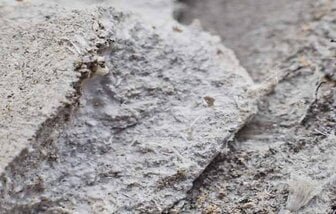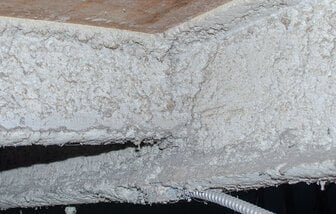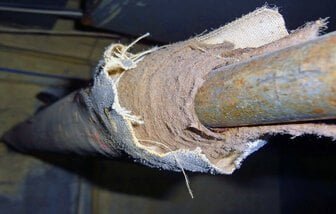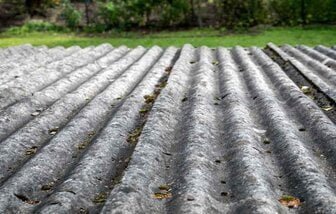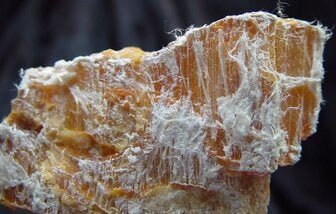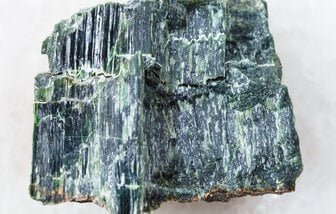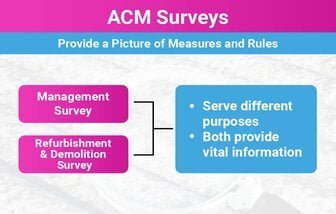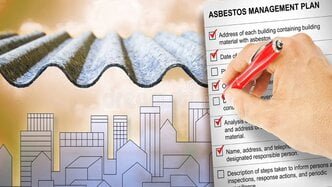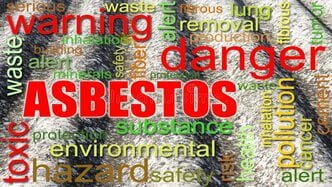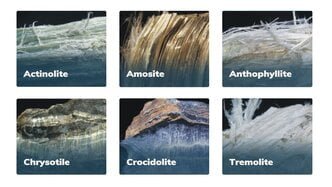Understanding Crocidolite Asbestos: Risks and Safe Removal in the UK
Crocidolite asbestos, or blue asbestos, is a highly hazardous type of asbestos known for its distinctive blue color. This mineral's thin, sharp fibers pose significant health risks, including asbestosis, lung cancer, and mesothelioma. Used extensively in older buildings for insulation and industrial products, its safe identification and removal are crucial. The UK enforces strict regulations under the Control of Asbestos Regulations 2012, mandating licensed professionals for asbestos handling and disposal to ensure public safety.
What is Crocidolite Asbestos and Its Appearance?
Crocidolite asbestos, commonly known as blue asbestos, is a highly hazardous form of asbestos. Recognized for its distinctive appearance and severe health risks, crocidolite requires careful handling and awareness.
This article delves into the characteristics and appearance of crocidolite asbestos, providing essential information for safe handling and identification.
Physical Appearance of Crocidolite Asbestos
Crocidolite asbestos is easily identifiable by its unique blue color, which sets it apart from other asbestos types. The fibers are thin, needle-like, and can be extremely sharp.
These fibers can range from light blue to dark blue shades, making them visually distinctive. The fine, fibrous structure of crocidolite asbestos allows it to be woven into materials, which unfortunately contributes to its widespread use in various industrial applications.
Common Uses of Crocidolite Asbestos
Historically, crocidolite asbestos was used extensively in a variety of products due to its durability and resistance to heat. Some common applications included insulation materials, cement products, and certain types of textiles.
Despite its beneficial properties, the health risks associated with crocidolite led to its ban in many countries. Today, the presence of crocidolite in older buildings requires careful management and removal by professionals.
Health Risks Associated with Crocidolite Asbestos
Exposure to crocidolite asbestos is linked to several serious health issues, including mesothelioma, lung cancer, and asbestosis. The thin fibers can be inhaled deeply into the lungs, where they remain lodged and cause damage over time.
Due to its high toxicity, it is crucial to handle crocidolite asbestos with extreme caution. Professional assessment and removal are recommended if crocidolite is suspected in any environment.

Crocidolite asbestos is a fibrous mineral that is part of the amphibole group. It is characterized by its bluish-gray color, hence the name “blue asbestos.” The fibers of crocidolite asbestos are extremely thin and can be easily inhaled, making it highly dangerous to human health.
Unlike other types of asbestos, crocidolite fibers are straight and needle-like, which further increases their ability to penetrate deep into the lungs when inhaled. These fibers are also resistant to heat and chemicals, which made crocidolite asbestos desirable for use in various industrial applications.
Crocidolite asbestos was primarily used in industries that required materials with high heat resistance and durability. Some common uses of crocidolite asbestos included:
- Insulation materials: Crocidolite asbestos was commonly used in insulation products, such as pipe insulation, boiler insulation, and electrical insulation. Its heat resistance properties made it an ideal choice for these applications.
- Building materials: Crocidolite asbestos was also used in the construction industry for roofing tiles, cement products, and acoustic ceiling tiles. These materials provided fire resistance and enhanced durability.
- Textiles: Crocidolite asbestos fibers were incorporated into textiles, such as fireproof clothing and protective gear, due to their heat resistance and strength.
Exposure to crocidolite asbestos can have severe health consequences. When the fibers are inhaled, they can become lodged in the lungs and cause significant damage over time. The long, thin fibers of crocidolite asbestos are particularly harmful because they are not easily cleared by the body’s natural defense mechanisms.
Prolonged exposure to crocidolite asbestos has been linked to several serious health conditions, including:
- Mesothelioma: Crocidolite asbestos is a known cause of mesothelioma, a rare and aggressive form of cancer that affects the lining of the lungs, abdomen, or heart.
- Lung cancer: Inhaling crocidolite asbestos fibers increases the risk of developing lung cancer, especially in individuals who smoke.
- Asbestosis: Exposure to crocidolite asbestos can lead to the development of asbestosis, a chronic lung condition characterized by scarring and inflammation of the lung tissue.
It is important to note that the health risks associated with crocidolite asbestos are not limited to those who worked directly with the material. Second-hand exposure can also occur when individuals come into contact with asbestos fibers brought home on contaminated clothing or through environmental exposure in buildings containing asbestos materials.
Crocidolite asbestos, commonly known as blue asbestos, is regarded as one of the most hazardous types of asbestos. Its highly friable nature means that its fibers can easily become airborne, posing significant health risks when inhaled. Exposure to crocidolite asbestos fibers has been linked to severe respiratory diseases, including asbestosis, lung cancer, and mesothelioma—a particularly aggressive and often fatal form of cancer. The latency period for these diseases can be lengthy, often taking decades to manifest, making early detection and prevention crucial.
Statistical data underscores the gravity of crocidolite asbestos exposure. According to the Health and Safety Executive (HSE), asbestos-related diseases account for approximately 5,000 deaths annually in the UK. Of these, a significant proportion is attributed to mesothelioma and lung cancer, underlining the critical need for stringent control measures and public awareness.
In response to the dangers posed by crocidolite asbestos, the UK has implemented robust regulations and guidelines for its safe removal. The Control of Asbestos Regulations 2012 mandates that only licensed professionals handle asbestos removal. These professionals are trained to manage the risks associated with asbestos and follow strict procedures to ensure the safety of both workers and the public. The process involves a thorough risk assessment, containment of the asbestos material to prevent fiber release, and the use of personal protective equipment (PPE).
The safe disposal of asbestos is also heavily regulated. Asbestos waste must be double-bagged, labeled, and transported to licensed disposal sites. The role of the HSE and other regulatory bodies is pivotal in overseeing compliance with these regulations, conducting inspections, and providing guidance to ensure best practices are followed.
For homeowners and property managers, it is essential to be vigilant about potential asbestos hazards. Regular property inspections, awareness of the materials used in construction, and prompt action if asbestos is suspected can mitigate health risks. Consulting with licensed asbestos professionals for surveys and removal ensures that any asbestos-containing materials are managed safely and in accordance with legal requirements.
Crocidolite asbestos, or blue asbestos, is a highly hazardous mineral with significant health risks. Recognizing its appearance and understanding its uses can help individuals identify potential sources of exposure and take appropriate precautions. If you suspect the presence of crocidolite asbestos, it is crucial to seek professional assistance to ensure the safety of yourself and other
HSE UK Legislation on Crocidolite Asbestos Removal
The Health and Safety Executive (HSE) is the regulatory body responsible for enforcing health and safety law in the UK. When it comes to the removal of Crocidolite asbestos, there are specific regulations that must be followed to protect workers and the general public from the harmful effects of this hazardous material.
1. Control of Asbestos Regulations 2012: This legislation sets out the requirements for managing asbestos in non-domestic premises, including the safe removal of Crocidolite asbestos. It outlines the responsibilities of duty holders, such as employers and building owners, to identify and manage asbestos-containing materials (ACMs) in their buildings.
2. The Asbestos (Licensing) Regulations 2012: These regulations apply to licensed asbestos removal contractors who carry out work involving Crocidolite asbestos. To work with Crocidolite, contractors must hold a license issued by the HSE. This license ensures that the contractor has the necessary skills, knowledge, and equipment to safely remove and dispose of Crocidolite asbestos.
3. Approved Code of Practice (ACoP) L143: This ACoP provides practical guidance on the Control of Asbestos Regulations 2012. It offers advice on how to comply with the regulations, including the safe removal of Crocidolite asbestos. Following the guidance in the ACoP is not mandatory, but it is considered good practice and can be used as evidence of compliance with the law.
Due to the high risk associated with Crocidolite asbestos, only licensed asbestos removal contractors are permitted to remove it. These contractors have undergone rigorous training and hold a license issued by the HSE. Hiring a licensed contractor ensures that the removal process is carried out safely and in compliance with HSE regulations.
When selecting an asbestos removal contractor, it is essential to verify their license and qualifications. You can check the HSE’s public register of licensed asbestos removal contractors to ensure that the contractor you choose is authorized to work with Crocidolite asbestos.
The removal of Crocidolite asbestos must be carried out by trained professionals following strict safety protocols. The process typically involves the following steps:
- Assessment: A thorough assessment of the site is conducted to determine the extent of the asbestos contamination and develop a removal plan.
- Containment: The work area is isolated and sealed off to prevent the spread of asbestos fibers to other parts of the building.
- Personal Protective Equipment (PPE): Workers wear appropriate PPE, including respiratory protective equipment, disposable coveralls, and gloves.
- Wet Removal: Crocidolite asbestos is wetted down to minimize the release of fibers during removal.
- Double Bagging: Asbestos waste is double-bagged and sealed in accordance with waste disposal regulations.
- Decontamination: Workers and equipment are decontaminated before leaving the work area to prevent the spread of asbestos fibers.
- Waste Disposal: Asbestos waste is transported and disposed of at a licensed disposal facility.
Conclusion
Removing Crocidolite asbestos is a highly regulated process governed by HSE UK legislation. It is crucial to hire a licensed asbestos removal contractor who has the expertise and qualifications to safely carry out the removal. By adhering to the regulations and following the correct procedures, you can protect the health and safety of workers and the public while effectively removing this hazardous material from your property.
Asbestos Millboard
Millboards manufactured between 1896 and 1965 can contain chrysotile asbestos (up to 97%). Often found in: Pipe runs, electrical gear, vaults, storage. Often used for: Fire protection on structural
Asbestos Cement
Generally containing 10-15% asbestos fibres which are bound in Portland cement or calcium silicate. Uncoated sheets, widely used in the past as a building material can be identified as light grey in
Asbestos Sprayed Coatings
Asbestos sprayed coatings have been widely used in the construction industry in the past, particularly in the United Kingdom
Asbestos Tiles
Learn about asbestos floor tiles in the UK, including their identification, dangers, and management. Find out how to identify asbestos floor tiles
Asbestos Lagging, Ropes & Yarns
Asbestos lagging and ropes were once widely used for their insulation properties. However, due to the health risks associated with asbestos exposure, their use has been banned in many countries.
Asbestos Textured Coatings
Asbestos textured coatings, also known as Artex or similar products, were widely used in the construction industry in the UK from the 1960s to the 1990s. These coatings were applied to ceilings
Corrugated Asbestos Panels
When it comes to garage roofing in the UK, one type of material that was widely used in the past is corrugated asbestos panels. However ue to health and safety concerns, the use of asbestos has been banned
Crocidolite Asbestos
Learn about crocidolite asbestos, a highly hazardous form of asbestos that was widely used in various industries. Discover its properties, health risks, and the importance of professional testing and removal.
Amosite Asbestos
Amosite asbestos, also known as brown asbestos, is a type of asbestos mineral that was widely used in various industries for its heat resistance and insulating properties.
Chrysotile Asbestos
Learn about chrysotile asbestos, its applications, and the potential health risks associated with exposure. Understand the importance of safety measures and regulations to prevent asbestos
Asbestos Surveys
We are able to provide any level of survey required, up to the Demolition and Refurbishment survey now required prior to the demolition of any building or structure.
What is Asbestos?
Asbestos was commonly used as a construction material in the UK between the 1950s and 1980s in particular. If your home was built between these years, chances are that you are living with Asbestos
Asbestos Management Plan
An asbestos management plan is essential for managing asbestos-containing materials (ACMs) in buildings. It aims to protect occupants and workers from asbestos exposure through identification, assessment, and control of ACMs.
Asbestos Dangers
Learn about the dangers of asbestos, its health risks including mesothelioma and lung cancer, and how to protect yourself from exposure. Understand the regulations and laws regarding asbestos, and find resources and support for asbestos-related issues.
Types Of Asbestos
Learn about the different types of asbestos, including chrysotile asbestos, amphibole asbestos, tremolite asbestos, and anthophyllite asbestos. Understand the characteristics and health risks associated with each type of asbestos.
How To Manage Asbestos
Dealing with asbestos requires caution and adherence to proper safety procedures. Identifying asbestos and taking appropriate action is crucial to protect the health and well-being of individuals. If you suspect the presence of asbestos.
Ready to start your project?
Committed to Excellence on all levels
Let's Work Together
Please complete the form below and someone from the Total team will be in touch to discuss your asbestos requirements For urgent needs, our customer support team is available through various channels. You can reach us via phone during business hours, or through our dedicated email support. We are committed to providing timely assistance and ensuring your asbestos concerns are addressed promptly and professionally.


